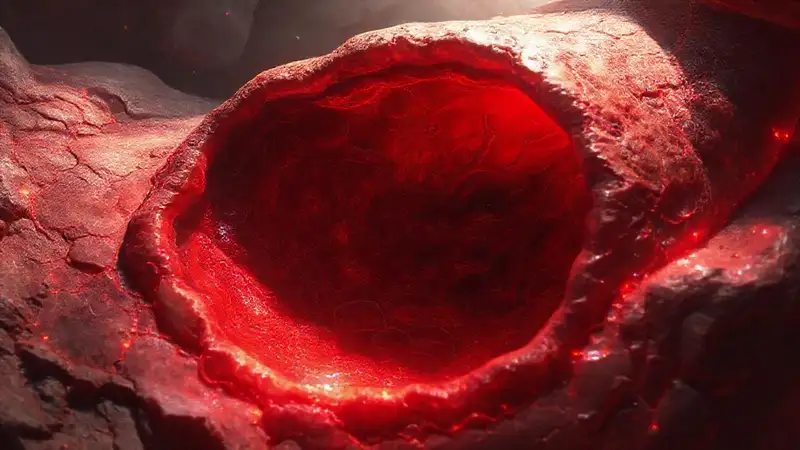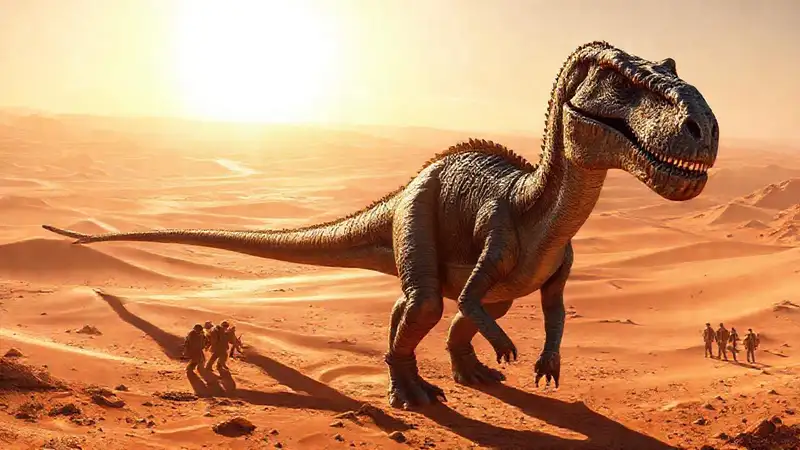The enigmatic world of dinosaurs continues to fascinate scientists, particularly when considering the physiological challenges they faced. Reconstructing their metabolic rates and energy expenditure is incredibly difficult, as fossilized remains rarely provide direct measurements. However, recent advancements in biomechanical modelling and isotope analysis have begun to offer insights into how these colossal creatures functioned. A crucial aspect of this reconstruction centers on how they managed heat – a significant problem for animals of their size, especially in warmer climates. Understanding the interplay between body size, activity level, and circulatory systems is fundamental to understanding dinosaur life.
This investigation proposes a compelling hypothesis: that variations in dinosaur blood composition, specifically in hemoglobin content and oxygen-carrying capacity, could have significantly influenced their ability to dissipate heat, ultimately impacting their size limits and ecological niches. Exploring the potential role of blood biochemistry in thermoregulation offers a novel perspective on dinosaur paleophysiology and helps bridge the gap between fossil evidence and functional biology. We'll delve into the existing evidence and explore the possibilities.
The Challenges of Large Body Size
One of the primary hurdles in understanding dinosaur metabolism is the relationship between body size and metabolic rate. Larger animals generally have higher metabolic rates simply because they have a larger amount of tissue to maintain. This translates to increased heat production through processes like muscle contraction and cellular respiration. The heat generated then needs to be effectively dissipated to prevent overheating, a particularly significant issue for dinosaurs – particularly those with feathered coats – which would have represented a considerable surface area for heat loss.
However, the surface-to-volume ratio doesn’t tell the whole story. The efficiency of heat transfer, dictated by circulatory systems and vascular density, plays a critical role. A dinosaur with a large body but a poorly developed circulatory system would have struggled to regulate its internal temperature, potentially limiting its potential size. Conversely, a smaller, more streamlined dinosaur could have overcome these limitations through a more efficient circulatory architecture. The interplay between these factors is what we are seeking to understand better.
Hemoglobin and Oxygen Transport: A Key Factor
The composition of dinosaur blood, particularly the type and concentration of hemoglobin, is a critical factor in oxygen transport and therefore, metabolic efficiency. Different dinosaur groups are hypothesized to have possessed varying degrees of diversity in hemoglobin types – from relatively simple, avian-like hemoglobin to more complex forms found in birds. Greater hemoglobin capacity would have allowed for more efficient oxygen uptake, supporting higher metabolic rates and potentially greater activity levels.
Furthermore, the efficiency of hemoglobin in binding and releasing oxygen changes with temperature. At elevated temperatures, hemoglobin's ability to bind oxygen can be compromised, leading to reduced oxygen delivery to tissues and a potential drop in metabolic rate as a ‘thermoregulatory’ response. Analyzing fossilized bone histology and comparing it to modern avian and reptilian hemoglobin characteristics provides crucial clues, though interpretations remain challenging.
Vascular Density and Heat Dissipation Mechanisms

Beyond hemoglobin, the density of blood vessels, particularly cutaneous blood vessels (those in the skin), is key to heat release. A higher density of these vessels means more surface area available for heat dissipation through radiation. Dinosaurs with extensive feathering – like Velociraptor – would have had an advantage in this regard, utilizing their feathers as “radiators” to shed excess heat.
However, the effectiveness of this passive cooling mechanism is reliant on external environmental conditions. If the air is already warm and humid, the rate of heat loss through radiation is significantly reduced. Investigating the distribution and density of blood vessels in fossilized skin impressions, alongside paleontological context, offers a compelling avenue to understanding dinosaur thermoregulatory strategies.
Isotopic Analysis and Metabolic Reconstruction
Recent advancements in stable isotope analysis (specifically oxygen and carbon isotopes) have provided valuable data about dinosaur metabolism. The ratios of these isotopes in dinosaur bones are sensitive to dietary habits and metabolic rates. Higher carbon-13 isotope ratios are generally associated with higher metabolic rates, indicating increased carbohydrate oxidation. Analyzing these data alongside other fossil evidence paints a more detailed picture of their energy needs.
Combining isotopic data with biomechanical modelling and anatomical studies allows scientists to create more robust estimates of dinosaur metabolic rates. However, it’s important to recognize the inherent uncertainties and limitations associated with isotope analysis, especially when extrapolating from relatively short bone segments. Further research is needed to refine these estimations and develop more accurate models of dinosaur physiology.
Conclusion
The study of dinosaur metabolism reveals a complex picture, constrained by the limited availability of direct measurements. However, by combining paleontology, biomechanics, and increasingly sophisticated analytical techniques, we’re starting to piece together a more complete understanding of how these incredible creatures functioned. Examining blood composition, particularly hemoglobin and vascular density, alongside isotopic data suggests that variations in these factors played a crucial role in regulating temperature.
Ultimately, researching dinosaur physiology isn't just about reconstructing the past; it provides valuable insights into the evolution of thermoregulation and the fundamental constraints on animal size and ecology. Further investigation into dinosaur blood biochemistry and its potential relationship with heat transport will undoubtedly continue to reshape our understanding of these magnificent extinct animals, pushing the boundaries of dinosaur paleontology and solidifying their legacy in the annals of evolutionary science.






Deja una respuesta